Capitol Speed Shop keeps Harley-Davidson motorcycles running two cylinders at a time
At just 23 years old, Marty Smestad became one of the youngest people ever to reach Harley-Davidson’s Master Technician level. He attended Motorcycle Mechanics Institute in Phoenix straight out of high school to focus on Harley and Honda engine work and that background allowed Marty to get dealership jobs in Alaska, Australia, North Dakota and Seattle. Now, with 10 years under his belt, Marty has remained in the Seattle area and opened his own shop back in December 2014.
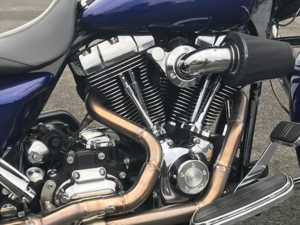
Named Capitol Speed Shop, Marty’s business is focused on V-Twin engine work – 80-85% of it Harley-Davidson – as well as head porting and EFI tuning.
“I do a lot of tuning using a dyno off-site,” Smestad says. “I’ve been doing that for about 10 years, which is one of the reasons why I’ve been hired in so many different dealerships around the country and around the world. When they need a dyno tuner they know that’s one of my main specialties.”
Another factor that bodes well for Marty and his shop is that there are simply a lot of Harleys on the road, and especially a lot of Twin Cam Harleys (1999-2016) that get ridden many miles and are in need of rebuilds.
“I think the motorcycle rebuild market is doing okay,” he says. “I mean there are so many Harleys on the road. I like to deal with people who ride their motorcycles and put on a lot of miles so they need rebuilds commonly.”
While Capitol Speed Shop knows how to do a good tune, Marty says common service requirements include jobs such as camshaft upgrades, increasing engine displacement and cylinder head work.
“Those are about the most common jobs that I do and a lot of it is because when you get past 30,000 and 50,000 miles, the top end starts to wear out,” he says. “If you’re going to freshen up your engine, you might as well get a bit more power out of it while you’re in there – it’s not that terribly expensive for the owner to use some bolt-in options.”
Marty tries to talk his clients into the higher performance jobs like larger valves and springs and higher compression. Most of these bikes now are fuel injected too – so adding a good fuel injection tuner is part of it. With good aftermarket support, Marty says the motorcycle engine rebuild market isn’t going away.
“As far as having a shop and keeping all these bikes on the road it’s definitely not going to be a problem, especially with the amount of aftermarket parts that just keep coming out as well,” Smestad says. “These bikes are also getting cheaper, so a lot of younger people are able to afford a little performance bike and a lot of people are putting big motors in them as well.”
Capitol Speed Shop is one of the few motorcycle engine rebuilders in the Seattle area, and Marty believes he benefits from a good reputation.
“When you start to get more specialized in things, people seek you out,” he says. “If you have a good reputation, a lot of your business is built on that. I don’t do much advertising. I get a lot of word of mouth or people find my website and like what they see – I end up getting a fair bit of work from it.”
Marty is always on the lookout for motorcycle parts and ways he can build a better engine. One such opportunity recently presented itself when Marty noticed a Craigslist ad for a 2015 Harley-Davidson Street Glide top end. It was a stock 103 cid engine with (3.875˝ bore) cast pistons, cylinders and heads with automatic compression releases.
As it turned out, this bike belonged to a man named Russell, a VP of a local tugboat company. Russell quickly became one of Capitol Speed Shop’s newest customers.
“He had the top end of that bike for sale and I was trying to purchase it from him – instead, I convinced him to install it on his Road King,” Smestad says. “It was just going to be a stock, bolt-on situation. However, Russell was interested in a bit more power.”
Russell’s 2007 Road King had a stock 96 cid engine and he had taken apart the top end from this 103 cid engine in order to make some upgrades. He was trying to reuse some old parts to make his existing bike go faster.

Marty got to work disassembling and measuring the engine. He quickly discovered that the output shaft and pinion shaft runout on the stock 4.375˝ stroke crank was excessive and needed to be trued.
When Marty discovered the bent crankshaft and main bearing situation, he insisted Russell allow him to build his engine properly, replacing the stock pistons with forged pistons, adding other better parts and performing other necessary service, turning this engine into a Harley-Davidson Twin Cam 107 cid engine.
“I sent the stock crank to Darkhorse Crankworks for inspection hoping they could rebuild, balance and true it,” he says. “Unfortunately, the output shaft was bent and it couldn’t be repaired. We went ahead and got him an S&S 4.375˝ stroke crankshaft. Then, Darkhorse Crankworks performed what they call their Man-O-War service, which includes their 7.670˝ H-beam rods, balanced, welded and trued crank. This set up features 114% stronger pinion and output shafts.”
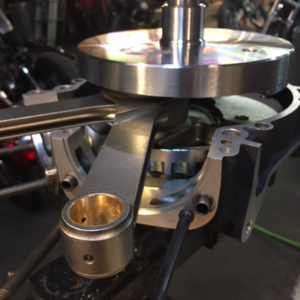 According to Marty, Darkhorse is one of the few companies in the country that will take a Harley Twin Cam flywheel apart. To do so you need a 30-ton press and a jig.
According to Marty, Darkhorse is one of the few companies in the country that will take a Harley Twin Cam flywheel apart. To do so you need a 30-ton press and a jig.
Marty found that the bike had a weak left main bearing that wasn’t pressed onto a flywheel. Marty knew of a conversion available for two pressed-on tapered Timken bearings.
“The left main bearing was upgraded from a single roller bearing to a dual-tapered Timken bearing setup,” he says. “I did that here in the shop and then we figured while we’re at it we might as well do a big bore. So we got CP-Carrillo pistons and bored the cylinders. I did the head work to match the 107 and ported his throttle body. I probably had about 40 hours in that job.”
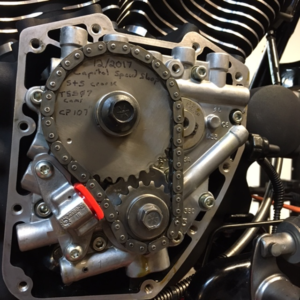
Smestad convinced Russell to bore his stock cylinders to accept 3.934˝ forged pistons from CP-Carrillo. At 107 cid, which is the largest big bore option for the stock cylinders, the pistons have a 3cc dome, which creates a 10.75:1 static compression ratio with stock combustion chambers.
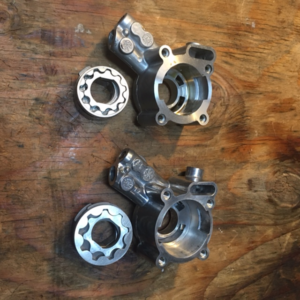
Marty did all the head work and ported for oversized valves. The valves were upgraded to 1.900˝ intake and 1.630˝ exhaust nitride stainless valves with manganese bronze guides, all from Kibblewhite.
Instead of adjustable pushrods, which are common on Twin Cam builds, Smestad used custom .090˝ wall pushrods from Manton and set each length individually.
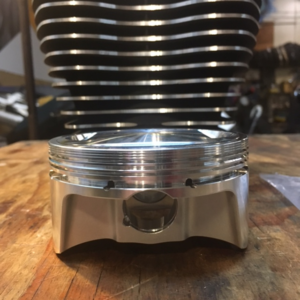
“If you’re going to freshen up your engine, you might as well get a bit more power out of it while you’re in there and it’s not that terribly expensive to do some bolt-in options.”
To make this build as strong and reliable as possible, Marty also used parts such as a high-volume Harley-Davidson Screamin’ Eagle oil pump, a Baisley high-performance oil bypass spring designed by Mike Stegmann of Latus Motors in Portland, S&S high-performance lifters, a set of T5S07 camshafts from Leineweber, and gaskets from Cometic.
“This engine actually turned out to be a nice, strong, little build,” Smestad says. “Russell’s pretty happy with it and I’m trying to talk him into taking it to the drag strip.”
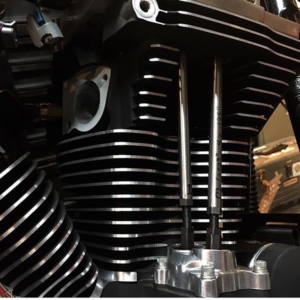
And why not? After being tuned using a Dynojet Power Vision tuner and Dynojet dyno, this Harley-Davidson Twin Cam 107 cid engine is putting out 115 hp and 120 lb.-ft. of torque.
Russell became another in a long line of satisfied customers, and Smestad doesn’t see his business slowing down anytime soon.
“Things could change, but I really can’t see my business getting to a point where I’ll have no work,” he says. “There’s just so many Harleys on the road and people want to keep their older bikes running. When you have 30,000 miles on a mid-2000s Harley, you can replace a lot of parts on it. That gets back to the aftermarket and I don’t see there being a lack of work for them.”














